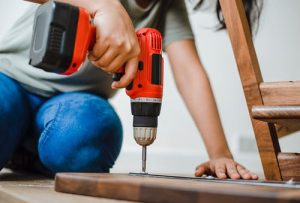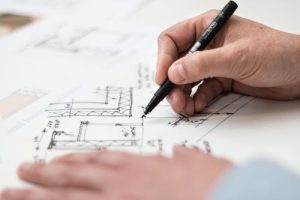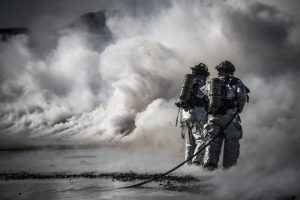Property restoration can be a complex and multifaceted process, necessary after events such as water intrusion, fires, mold growth, or storms have damaged a property. It’s a journey from damage control to full recovery, often involving several steps to return the property to its pre-damaged state. Understanding this process is vital for homeowners and business owners alike when tragedy strikes.
Damage Assessment
Thorough assessment forms the bedrock of the restoration process, as it helps identify everything that needs to be repaired or replaced.
-
Scoping: Professionals perform a meticulous inspection to scope out the affected areas.
-
Documentation: Detailed documentation is crucial, as it is often required for property insurance claims.
-
Determination: Experts assess the extent of damage, be it smoke, water, or structural, to chart a course for restoration.
Professionals work seamlessly with insurance companies at this stage to ensure a smooth property insurance claim process.
Cleanup Process
The cleanup process is fundamental to restoration, involving debris removal and the cleaning of affected items.
-
Debris Disposal: Any non-salvageable items and hazardous materials are disposed of securely.
-
Contents Restoration: Salvageable items are cleaned and restored when possible.
-
Sanitization: Affected areas are sanitized to prevent mold growth and eliminate health risks.
During the mold remediation stage, professionals conduct methods similar to PuroClean mold cleanup Aventura, ensuring that the property is free from the health risks associated with mold growth.
Mold Remediation
Mold growth poses a serious health risk, and addressing it swiftly is paramount to the restoration process.
-
Mold Inspection: The area is inspected for all signs of mold, including hidden growth.
-
Containment: Affected areas are contained to prevent cross-contamination.
-
Removal: Specialized procedures are applied to remove mold and prevent its return.
In situations where mold is a major concern, methods like those performed by PuroClean restoration professionals are employed to ensure thorough eradication and the safety of the environment.
Reconstruction Phase
The reconstruction phase brings a property back to livable standards, replacing structural elements and refinishing surfaces.
-
Rebuilding: Damaged structures are repaired or rebuilt.
-
Finishing: Finishing touches such as painting and flooring are completed to make the space habitable again.
-
Customization: Some may take this opportunity to update or improve their space.
Reconstruction services bear the torch of hope, transforming a damaged shell back into a home or functioning business space.
Restoration Services
From residential to commercial restoration, the spectrum of services offered covers a vast array of needs, ensuring that operations can resume as smoothly as possible.
-
Specialized Treatments: Specific services such as smoke odor removal are part of the detailed restoration process.
-
Diverse Expertise: Residential restoration differs from commercial restoration, each with unique challenges and solutions.
-
Disaster Recovery: Disaster recovery services are tailored to encompass the entire range of damages inflicted by catastrophes.
Fire damage restoration, for instance, not only involves structural repairs but also detailed cleaning to remove smoke residues and odors.
Collaboration with Insurers
Restoration services maintain a symbiotic relationship with insurance companies, often assisting in the claims process to expedite restoration.
-
Claims Assistance: Many restoration professionals help clients navigate their property insurance claims.
-
Direct Billing: Some offer the convenience of direct billing to the insurance companies.
-
Documentation: Proper documentation provided by the restoration service is crucial to the claims process.
How restoration services work with insurance companies is a complex dance of documentation, assessment, and direct communication aimed at simplifying the claims process for property owners.
Post-Restoration Care
After the physical work of restoration, caring for your property post-disaster is foundational to maintaining its condition and preventing future issues.
-
Maintenance Tips: Professionals may provide advice on how to maintain the restored property to prevent future damage.
-
Upgrades: They may also suggest upgrades or improvements to prevent similar disasters from reoccurring.
-
Follow-Up: Some companies offer follow-up visits to ensure restoration work holds up over time.
The role of restoration services encompasses not only the immediate recovery efforts but also the guidance and support given to property owners in the aftermath of a disaster.
Choosing the Right Company
With numerous companies offering restoration services, choosing the right one can have a significant impact on the recovery process.
-
Certifications: Look for companies with certification and proper credentials.
-
Experience: Prioritize companies with a track record of successful restorations.
-
Referrals: Personal referrals or online reviews can provide insights into a company’s reliability.
A quality restoration company can mean the difference between a seamlessly restored property and a prolonged, stressful recovery period.
To End
Understanding the property restoration process allows property owners to navigate the daunting aftermath of a disaster with a measure of confidence. By recognizing the steps involved, from immediate response to post-restoration care and the importance of swift action by professionals, property owners can prepare themselves mentally and practically for this journey. Restoration is not merely about repairing what is broken; it’s a comprehensive service designed to bring normalcy back to disrupted lives.





